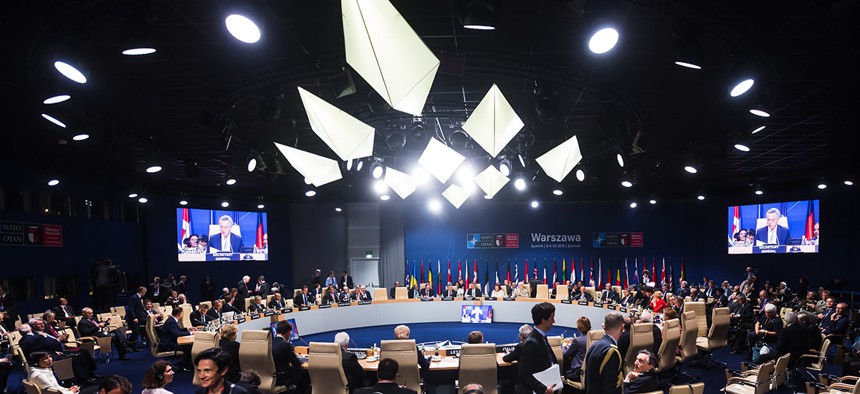NATO's Secret Weapon: Videochat

Drop of Light/Shutterstock.com
The organization thinks videoconferencing technology could bridge cultural gaps.
The North Atlantic Treaty Organization is planning to invest more in videoconferencing technology, part of an effort to update its internal communication systems.
During the terrorist attacks in Brussels earlier this year, NATO officials met via a videoconferencing platform that allowed them to see each other as well as maps and content. NATO's conference management head told Nextgov he plans to deploy a new "virtual presence" system at the organization's headquarters.
Last month, Gus Mommers told Nextgov about NATO's videoconferencing strategy. This conversation has been edited for length and clarity.
Nextgov: Why are you investing in video?
GM: NATO consists of 28, soon 29, NATO nations. All of those nations have their own language, mannerisms, body language. You can see the people who are speaking, you can see the expressions on their face. It becomes mission critical.
We can be interactive with content—the other side of the table can say, "No, you should position your troops over here." We're talking about maps, any images, financials. Before we put this in the operational network, I explained to people that [Polycom's Centro technology] isn't a replacement [for in-person meetings.]
[Until recently], the discussion was over the phone, or per email. Email transmissions were, of course, not as fast and in real time as we know them today. People still used fax, so we would send images over fax. That was the sort of communication we're used to.
Nextgov: Are you investing in automatic translation, too?
GM: We thought about that. But we’re not going to implement that because the two formal languages in NATO are French and English. We only use translation services when we have conferences and meetings, where we have partners that are outside the scope of NATO.
NG: Why was video so critical during the Brussels attack?
For people who were traveling, people on their way to Brussels, people we knew were at the airport—we had to get a plan together to connect with these people. In the first hours of this crisis, the whole network was just down, because the authorities shut down the network so perpetrators couldn't communicate with each other. The one thing we could use was in NATO, our own telephony network, and of course, Polycom [videoconferencing technology.]
NEXT STORY: Video: NASA Hosts Pumpkin-Carving Contest





